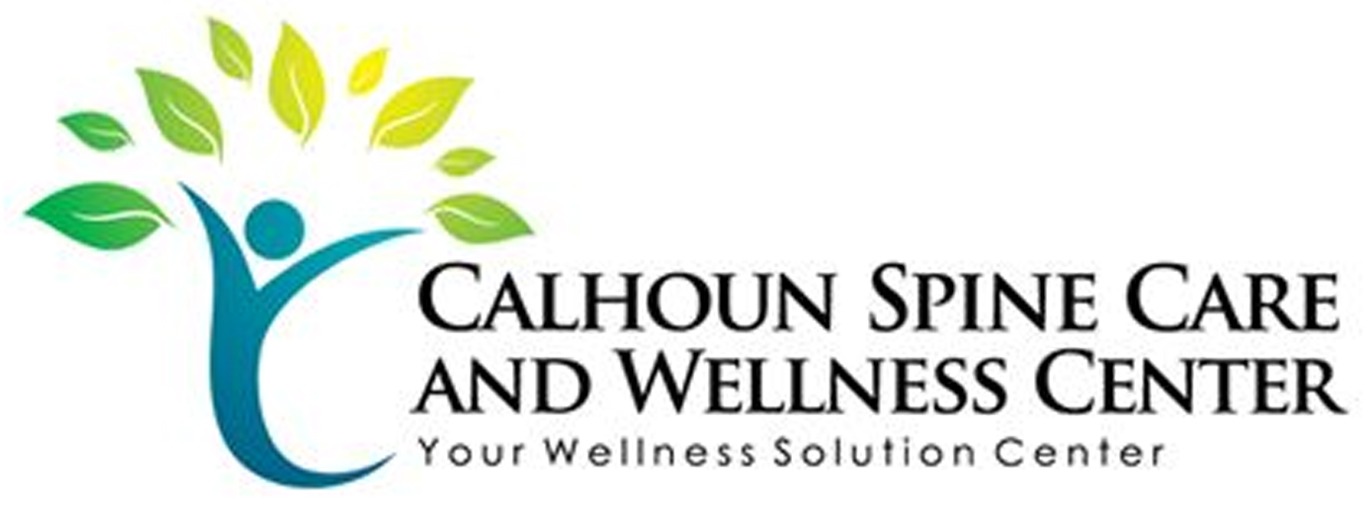When you're dealing with back pain, maneuvering the myriad of relief options can be overwhelming. You've got over-the-counter medications, prescription pain relievers, and various physical therapies at your disposal. Each method has its own merits, whether it's the quick relief from NSAIDs or the holistic approach of acupuncture. But how do you know which solution suits your specific situation best? The right choice could greatly impact your comfort and recovery, and examining the nuances of each option might just reveal the answer you need.
Over-the-Counter Medications
When your back pain strikes, over-the-counter medications can be your first line of defense. These medications, commonly found at your local pharmacy, help relieve inflammation and alleviate pain, allowing you to regain your mobility and comfort. Nonsteroidal anti-inflammatory drugs (NSAIDs) like ibuprofen and naproxen are popular choices. They work by reducing swelling and blocking pain signals, making your day-to-day activities much more manageable.
Acetaminophen is another effective option. While it doesn't target inflammation directly, it's excellent for pain relief and can be gentler on your stomach than NSAIDs. If you're unsure which medication to choose, consider your specific symptoms and any pre-existing conditions. Always read the labels for dosage instructions, and don't hesitate to consult with a pharmacist or healthcare professional if you need clarification.
It's vital to remember that while over-the-counter medications can provide temporary relief, they shouldn't be your sole solution. Over-reliance on them can lead to side effects or mask underlying issues that require further attention.
Pairing medication with rest, gentle stretching, or heat therapy can enhance your recovery. If your pain persists beyond a few days, or if you experience significant discomfort, it's important to seek professional advice. Your health is paramount, and addressing the cause of your pain early on can prevent more serious complications down the road.
Prescription Pain Relievers
Sometimes, over-the-counter options aren't enough to manage persistent back pain, and that's where prescription pain relievers come in. These medications are stronger than their over-the-counter counterparts and can provide the relief you need. Your doctor may prescribe a variety of options based on the severity of your pain and your medical history.
Opioids are one class of prescription pain relievers that can be effective for managing severe pain. They work by binding to specific receptors in your brain to block pain signals. However, they come with risks of addiction and dependence, so your doctor will likely monitor your usage closely. It's important to follow their guidance to minimize these risks.
Another option is nonsteroidal anti-inflammatory drugs (NSAIDs) available in prescription strength. These can help reduce inflammation and alleviate pain, making them suitable for conditions like muscle strains or spinal issues.
Your doctor might also consider muscle relaxants, especially if muscle spasms accompany your back pain. These medications can help relieve tension and improve your mobility.
While prescription pain relievers can provide significant relief, it's vital to use them responsibly. Always discuss potential side effects and interactions with your doctor, and never adjust your dosage without consulting them first.
Understanding how these medications work and what to expect can help you make informed choices about managing your back pain effectively. Remember, effective pain relief often involves a thorough approach that includes both medication and lifestyle changes.
Physical Therapy Techniques
Physical therapy techniques can play an essential role in alleviating back pain and improving your overall mobility. These techniques often involve a combination of exercises, stretches, and manual therapy tailored to your specific needs.
When you work with a physical therapist, they'll assess your condition and create a personalized treatment plan designed to strengthen your muscles, increase flexibility, and reduce pain.
One effective technique is therapeutic exercise, which focuses on strengthening the core muscles that support your spine. By engaging in targeted exercises, you can enhance stability and reduce the risk of further injury.
Your therapist might also introduce stretching routines to improve flexibility and relieve tension in tight muscles.
Another valuable technique is manual therapy, where your therapist uses hands-on methods to manipulate your spine and surrounding tissues. This approach can help release tightness and improve your range of motion.
Additionally, modalities like heat, ice, or electrical stimulation may be employed to alleviate pain and inflammation.
Education is also a vital component of physical therapy. Your therapist will teach you proper body mechanics and posture to help prevent future back pain.
They may provide guidance on ergonomics, ensuring that your workspace supports your back health.
Chiropractic Adjustments
Chiropractic adjustments offer another effective approach to managing back pain. If you're dealing with discomfort, visiting a chiropractor may be a beneficial option for you. These healthcare professionals focus on diagnosing and treating musculoskeletal issues, particularly those affecting the spine. Through hands-on spinal manipulation, chiropractors aim to improve alignment and enhance your body's natural ability to heal.
During your first visit, your chiropractor will take a thorough medical history and perform a physical examination. This helps them identify any misalignments or dysfunctions in your spine and surrounding muscles. Once they've assessed your condition, they'll develop a tailored treatment plan that may include spinal adjustments, soft tissue therapy, and exercises to strengthen your back.
The primary goal of chiropractic adjustments is to restore proper alignment to your spine, which can alleviate pressure on nerves and reduce inflammation. Many patients report significant pain relief and improved mobility after just a few sessions.
Additionally, chiropractic care emphasizes holistic health, encouraging you to adopt lifestyle changes that support overall wellness. You might also find that regular adjustments not only help with back pain but can enhance your overall quality of life.
Acupuncture Benefits
If you're looking for a natural way to ease back pain, acupuncture might be worth considering.
It works by reducing pain through targeted stimulation of specific points, promoting a holistic approach to healing with minimal side effects.
You could find that this ancient practice not only alleviates discomfort but also enhances your overall well-being.
Pain Reduction Mechanism
Acupuncture, a time-honored practice, offers a unique pain reduction mechanism that many find effective for back pain relief. This ancient technique involves inserting thin needles into specific points on your body, stimulating nerves and promoting the release of endorphins. These natural pain-relieving chemicals can help alleviate discomfort and improve your overall well-being.
When you experience back pain, you might notice several benefits from acupuncture:
- Reduced inflammation: By targeting specific areas, acupuncture can lower inflammation levels, helping your body heal faster.
- Improved blood flow: The needle insertion enhances circulation, delivering more oxygen and nutrients to affected muscles.
- Stress relief: Acupuncture can trigger relaxation responses, which may help reduce tension that contributes to back pain.
- Enhanced mobility: By relieving pain and tension, acupuncture can improve your range of motion, making daily activities easier.
With consistent sessions, many people report significant improvements in their back pain, making acupuncture a compelling option for those seeking relief.
If you're open to trying alternative therapies, acupuncture might just be the solution you've been looking for.
Holistic Healing Approach
Holistic healing embraces the idea that your body, mind, and spirit are interconnected, and acupuncture plays an essential role in this approach to back pain relief. By targeting specific points along your body's energy pathways, acupuncture helps restore balance and promote overall well-being.
When you're experiencing back pain, acupuncture can alleviate tension and release endorphins, your body's natural painkillers. You might find that acupuncture not only reduces your physical pain but also helps you manage stress and anxiety, which can exacerbate discomfort.
The treatment encourages relaxation, allowing your mind to calm down and your body to heal. Many people report a sense of clarity and increased energy following their sessions, making it a holistic option worth considering.
Furthermore, acupuncture can enhance your body's natural healing processes. By improving blood circulation and increasing the flow of oxygen, it supports tissue repair and reduces inflammation in the affected areas.
This approach addresses the root causes of your pain rather than just masking the symptoms. So, if you're looking for a thorough solution to back pain, acupuncture could be a valuable part of your journey to wellness.
Minimal Side Effects
One of the standout benefits of acupuncture is its minimal side effects compared to many conventional treatments.
When you're seeking relief from back pain, it's essential to evaluate options that won't add more discomfort. Acupuncture uses fine needles to stimulate specific points in your body, promoting healing without the heavy side effects often linked to medications.
Here's what you can expect with acupuncture:
- Less Risk: You won't face the same potential for addiction or dependency as with painkillers.
- Natural Healing: Your body's own healing mechanisms are activated, encouraging a holistic approach.
- Quick Recovery: Most people experience minimal soreness, letting you get back to your daily activities sooner.
- No Overwhelming Side Effects: Unlike some treatments, acupuncture doesn't come with a laundry list of adverse reactions.
Massage Therapy Options
When it comes to managing back pain, massage therapy offers various techniques that can greatly ease your discomfort.
Regular sessions not only provide immediate relief but also contribute to long-term wellness.
As you consider your options, it's important to think about the type of therapy that best suits your needs and lifestyle.
Types of Massage Techniques
Massage therapy offers a variety of techniques designed to alleviate back pain and promote overall well-being. Each technique targets specific muscle groups and areas of tension, allowing you to find relief and improve your mobility.
Here are some popular massage techniques you might consider:
- Swedish Massage: This gentle technique uses long, flowing strokes to relax muscles and improve circulation, making it great for overall relaxation.
- Deep Tissue Massage: If you have chronic pain or tight muscles, this technique focuses on deeper layers of muscle and connective tissue, helping to release tension.
- Trigger Point Therapy: This method targets specific knots in the muscles, applying pressure to relieve pain and restore function in affected areas.
- Sports Massage: Ideal for athletes or active individuals, this technique combines various methods to address muscle tightness and enhance performance.
Benefits of Regular Sessions
Regular massage sessions can considerably enhance the benefits gained from specific techniques like Swedish or deep tissue massage. By committing to a routine, you'll experience cumulative effects that promote lasting relief from back pain. As your body adapts to regular treatment, you'll notice reduced muscle tension and improved flexibility.
Frequent sessions also help to manage stress and anxiety, which can exacerbate pain. When you take time for yourself, you foster a sense of well-being that supports overall health. You'll likely sleep better, as massage can improve circulation and facilitate relaxation, leading to more restorative rest.
Additionally, regular therapy can help you identify patterns in your pain. Your therapist can track your progress and make necessary adjustments to your treatment plan, ensuring you receive the most effective care tailored to your needs.
Over time, you may find that regular sessions not only alleviate existing discomfort but also prevent future issues. By investing in your health through consistent massage therapy, you're taking proactive steps toward a pain-free life.
This commitment can lead to enhanced mobility and a better quality of life, making it a worthwhile addition to your self-care routine.
Considerations for Choosing Therapy
Choosing the right therapy for back pain can feel overwhelming, given the numerous options available. It's crucial to take into account a few factors before diving into massage therapy. Understanding your unique needs can help streamline your decision-making process.
Here are some things to keep in mind:
- Type of Pain: Is your back pain acute or chronic? Different types of pain may respond better to specific massage techniques.
- Therapist Qualifications: Look for a licensed and experienced massage therapist who specializes in back pain relief. Their expertise can make a significant difference.
- Personal Preferences: Think about whether you prefer deep tissue, Swedish, or trigger point therapy. Each type offers different benefits and sensations.
- Budget and Availability: Factor in how often you can afford treatments and whether the therapist's schedule aligns with yours. Regular sessions are often more beneficial.
Heat and Cold Therapy
When it comes to managing back pain, heat and cold therapy can really turn things around. These two methods are simple yet effective tools you can use to alleviate discomfort and promote healing. Understanding when and how to use them can make a significant difference in your recovery process.
Heat therapy, often applied through heating pads, warm baths, or hot packs, is great for relaxing and soothing stiff muscles. When you apply heat, it increases blood flow to the area, which can help reduce tension and promote healing. You might find that using heat for 15 to 20 minutes at a time offers you the relief you need.
Just be cautious not to apply heat for too long, as it can lead to burns or increased inflammation.
On the other hand, cold therapy, using ice packs or cold compresses, is ideal for reducing inflammation and numbing sharp pain. It's particularly effective right after an injury or during flare-ups. Applying cold for about 15 to 20 minutes can help constrict blood vessels, which reduces swelling.
Again, be careful to wrap ice packs in a cloth to protect your skin.
Combining heat and cold therapy can also be beneficial. Start with cold therapy to address inflammation, then switch to heat for muscle relaxation. Experiment with both methods to see what works best for you, and always listen to your body's response.
Exercise and Stretching
A variety of exercises and stretches can considerably enhance your back pain relief efforts. Engaging in a consistent routine helps strengthen your back muscles, improve flexibility, and promote better posture. When you incorporate these movements into your day, you'll likely notice a significant reduction in discomfort.
Here are some effective exercises and stretches to take into account:
- Cat-Cow Stretch: This gentle flow helps increase flexibility in your spine and relieves tension.
- Child's Pose: A calming stretch that lengthens your back and helps release tight muscles.
- Pelvic Tilts: Strengthening your core can alleviate pressure on your lower back, making this exercise beneficial.
- Hamstring Stretch: Tight hamstrings can contribute to back pain, so stretching them can provide relief.
Before starting any new exercise program, it's crucial to consult with a healthcare professional, especially if you're experiencing chronic pain. They can help tailor a routine that suits your needs and guarantees you're not exacerbating your condition.
Consistency is key. Aim to integrate these exercises into your daily routine, even if it's just a few minutes each day. You'll build strength and flexibility over time, which can lead to long-lasting relief from back pain.
Remember to listen to your body—if something doesn't feel right, modify the movement or take a break. With dedication, you'll likely find that exercise and stretching serve as valuable tools in your back pain management strategy.
Alternative Remedies
Many people often explore alternative remedies to complement their back pain relief efforts. These approaches can provide additional support and may help you manage your discomfort more effectively.
One popular option is acupuncture, where thin needles are inserted into specific points on your body to alleviate pain. Many individuals report reduced back pain after just a few sessions.
Another alternative remedy you might consider is chiropractic care. Chiropractors use hands-on spinal manipulation to improve alignment and relieve pain. This method often helps restore mobility and function, making it easier for you to engage in daily activities.
Herbal supplements can also play a role in your relief strategy. Turmeric, for instance, contains curcumin, which has anti-inflammatory properties. You can add it to your diet or take it as a supplement to help reduce pain and inflammation.
Similarly, devil's claw and white willow bark are known for their pain-relieving qualities.
Massage therapy is another effective alternative. Regular sessions can help release muscle tension, improve circulation, and promote relaxation. You might find that a combination of techniques, like deep tissue massage and trigger point therapy, works best for your specific needs.
Lastly, consider mindfulness practices like yoga or meditation. These can help you manage stress and tension, which often contribute to back pain.
Conclusion
To sum up, finding the right solution for back pain relief is all about personal preference and what works best for you. Whether you lean towards over-the-counter medications, physical therapies, or alternative treatments, each option has its advantages. Don't hesitate to experiment with different approaches, and consider consulting a healthcare professional to tailor a plan that suits your needs. With the right combination, you can effectively manage your back pain and improve your overall quality of life.



